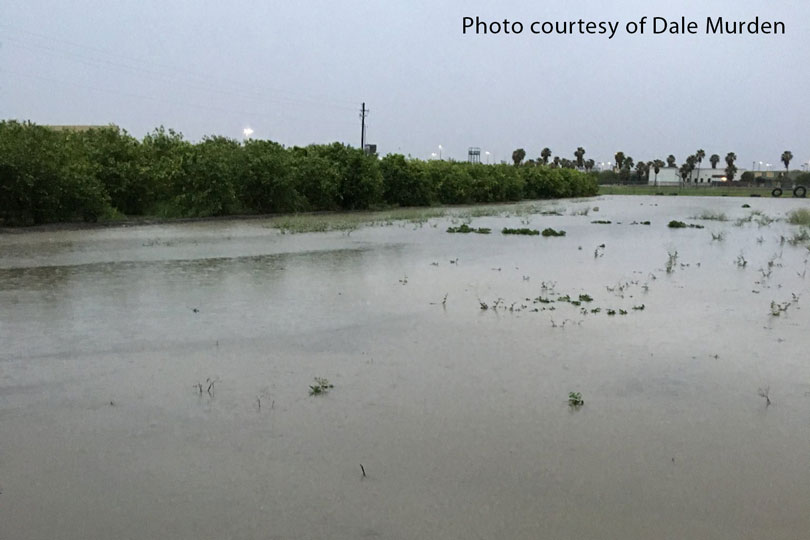By Jennifer Dorsett
Field Editor
South Texas has seen extensive flooding and record-setting rainfall this week.
While it was hot and dry last week, portions of South Texas are now awash in rainfall. Areas from Victoria to the Rio Grande Valley have experienced immense downpours over the past several days, causing flash floods in some areas.
As of June 12, nearly all of the area between Val Verde and Harris counties and south to the Texas-Mexico border was in some form of drought, according to the National Drought Mitigation Center.
A tropical disturbance was predicted to bring rainfall to the Gulf Coast early this week. Those forecasts were predicting widespread rainfall totals of one to three inches, with only a few areas predicted to receive five to 10 inches.
Instead, extensive rain fell along the coast, with the Coastal Bend and Rio Grande Valley hit the hardest. Harlingen saw more than 14 inches of rain in 72 hours, while Corpus Christi received more than 12 inches of rain between June 18 and June 20.
Reports of water over roadways, submerged vehicles and flooded buildings are coming in from across these areas.
While rain is usually considered a good thing and especially during a drought, farmers and ranchers are saying this is a case of too much all at once.
Benton England, who raises cattle and grows cotton, corn and grain sorghum in Hidalgo County, said he received more than 11 inches of rain in less than 36 hours at his home near Mercedes.
“That’s the crazy thing,” England said. “We have some fields that maybe had one inch of rain on them for the year, and here we are with 11-and-a-half inches in some places.”
Before the storms blew in, England was preparing to harvest his sorghum crop, but it will now have to wait until the fields have dried.
His cattle are all fine for now, but he said it’s not just the actual rain event that causes issues, but what comes after the floodwaters recede: flies and mosquitoes.
“Mosquitoes are fixing to get pretty serious, pretty quick,” England said. “The flies can get so bad that they can clog up a calf’s nose and suffocate them.”
Mosquitoes can cause cattle to drop weight, England explained, because the cows are moving around more, trying to rid themselves of the pests. Blood loss and anemia in cattle can also occur when mosquito populations are high, reducing productivity.
Brian Jones, who grows cotton north of Weslaco in Hidalgo County, said his farm received more than six inches in one evening. He considers himself lucky, because he escaped major flooding. But the water is still wreaking havoc in his fields.
“South of me, closer to Weslaco, they had 10 to 12 inches of rain,” Jones said. “All that water has to come through the drainage system first before my fields will start draining. The drainage system is actually running backwards right now and putting water back into my fields.”
Jones said the bolls on his cotton plants are underwater but still closed, so the fiber should not sustain any damage. He said his cotton harvest date was still 30 days away, so right now his attention is on his sorghum and corn crops.
“A lot of grain harvest needs to be going on right now, but all that has come to a screeching halt,” Jones said. “I have grain sorghum that’s ready to be cut, and corn is probably 10 days away. This is going to delay things at least a week.”
The storm system responsible for the deluge is forecast to begin moving out of South Texas on Thursday, according to the National Weather Service.

